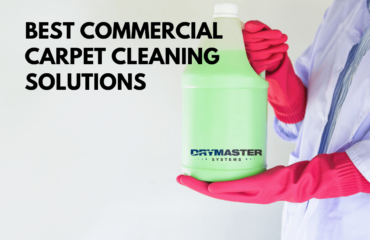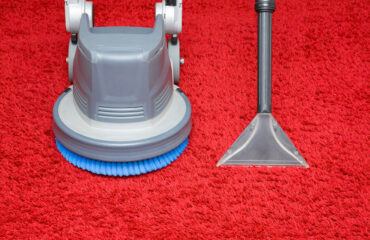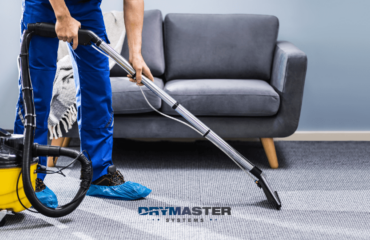Professional carpet cleaning uses specific cleaning chemicals, each made for a different job. Some are great for breaking down grease and oil or lifting ground-in dirt. Others work better on tough stains, rust marks, or mineral buildup. But how do you know which product to use and when?
One easy and reliable method for choosing the right product is to check the pH of carpet cleaning solutions. The pH tells you whether a solution is acidic or alkaline, which helps match it to specific types of stains or buildup. Knowing the pH helps you pick the right cleaner for the job.
Choosing the right carpet cleaner pH matters if you want good results without damaging the carpet. pH levels affect how a cleaner interacts with stains, dirt, and fibers. Understanding the pH scale—and when to use each type—leads to deeper cleaning and longer-lasting carpets.
The pH Scale Explained
In chemistry, the pH scale measures the acidity or alkalinity of a liquid. The scale goes from 0 to 14, with 7 in the middle as neutral. Anything below 7 is considered acidic, and anything above 7 is alkaline (also known as basic.)
| pH | Examples |
|---|---|
| 14 | Drain cleaner (sodium hydroxide) |
| 13 | Bleach, lye |
| 12 | Soap, lime (calcium hydroxide) |
| 11 | Ammonia cleaner |
| 10 | Milk of magnesia |
| 9 | Baking soda |
| 8 | Seawater |
| 7 | Plain water |
| 6 | Milk |
| 5 | Black coffee |
| 4 | Wine |
| 3 | Vinegar |
| 2 | Lemon juice |
| 1 | Battery acid |
| 0 | Hydrochloric acid |
How pH Affects Carpet Fibers
When it comes to carpet cleaning, the pH scale helps you determine whether a solution is acidic, neutral, or alkaline. Many carpet cleaning products fall in the neutral or near-neutral range. These are great for regular maintenance, rinsing, or delicate carpets. Experienced pros know when to bring out acidic vs. alkaline carpet cleaners, especially for tough jobs where a neutral solution won’t get the job done.
Each type—acidic, neutral, and alkaline—serves a purpose, depending on the stain or surface you’re cleaning. It’s best to have solutions from all three pH categories to be prepared for different cleaning challenges.
Here’s a quick breakdown of when and why to use each type:
When To Use Neutral pH Carpet Cleaners
Neutral carpet cleaning solutions typically have a pH between 6.5 and 7.5. While they aren’t designed for heavy-duty cleaning, they’re perfect for gentle, safe maintenance. This makes them the best pH level for carpet cleaning, which focuses on preserving and extending the life of carpet fibers.
Common uses for neutral pH solutions include:
- Cleaning delicate fibers. Many products made for delicate fibers are designed to be diluted with water, which brings them to a neutral (or near-neutral) pH. Once diluted, they’re suitable for cleaning more sensitive materials like wool, silk blends, or certain types of upholstery.
- Routine maintenance. For carpets that aren’t heavily soiled or stained with oils or grease, neutral pH cleaners are a reliable option for day-to-day cleaning and upkeep. They won’t leave behind sticky residues that attract more dirt and are gentle enough not to harm the carpet’s fibers or dyes.
- Rinsing after alkaline treatment. After using an alkaline cleaner on a carpet, following up with a neutral pH solution helps rinse away any leftover residue. This step brings the carpet’s surface pH back to a safe range, lowering the chances of damage to the fibers.
When To Use Acidic Carpet Cleaners
Acidic cleaning solutions generally have a pH of 6 or below, with some concentrated formulas reaching as low as pH 2. They’re best for targeted tasks like removing stains, mineral buildup, or stubborn grime—not for routine cleaning.
Their low pH can break down fibers and cause dye bleeding. After using an acidic product, it’s important to follow up with a neutral or mildly alkaline rinse to balance the carpet’s pH, depending on how acidic the original cleaner was.
Acidic cleaners are typically used for more specialized situations, including:
- Rust removal. Some solutions have a very low pH, giving them the carpet cleaning chemistry necessary to dissolve rust and remove deposits from carpets, upholstery, and hard surfaces like tiles.
- Cleaning tannin and beverage stains. Organic stains like coffee, tea, and cola contain tannins that can leave lasting discoloration if not addressed promptly. Acidic solutions are effective at breaking down these compounds and helping prevent permanent staining.
- Eliminating urine and foul odors. Odor-removing concentrates use their acidity to break down urine salts and ammonia compounds, which are often the source of strong, lingering odors.
When To Use Alkaline Carpet Cleaners
Alkaline cleaners are high-pH solutions, often 8 or more. Professional carpet cleaners rely on alkaline products to remove stains, soil, dirt, and other forms of grime, especially in high-traffic settings like entryways, living areas, and commercial spaces.
Due to their high pH, alkaline cleaners can leave a sticky residue if not rinsed with a lower pH solution. They’re most effective as pre-sprays to break down heavy soil and grime, followed by a neutral rinse to restore balance.
Common uses for alkaline solutions include:
- Heavy-duty carpet cleaning. Very high-pH products are excellent at breaking down grease, oils, dirt, and other common grime found in high-traffic carpets. They’re the best choice for carpets with daily foot traffic.
- Treating synthetic carpets. Durable synthetic fibers like olefin, nylon, and polyester are less sensitive to pH than wool or natural fibers. Alkaline solutions can be used on these synthetics without much risk of damaging the fibers or causing dye bleeding.
- Neutralizing pH in carpet cleaning. Rinsing a carpet with a mild alkaline solution after using a strong acid spot treatment can neutralize pH levels faster than using a neutral cleaner alone.
How To Test and Adjust the pH Level of a Cleaning Solution
Carpet cleaning businesses rely on high-quality, versatile products. Testing and adjusting a solution’s pH gives you greater control, allowing you to handle tough grime while protecting carpet fibers. Getting the right pH balance improves both cleaning results and long-term carpet care.
Here are some of the best pH testing and adjustment practices:
- Using pH strips. A pH strip is an inexpensive and effective way to test your solution’s current pH level. Dip it in your carpet cleaner, then check the color against the pH chart.
- Diluting solutions. Adding water to a cleaning solution or concentrate brings its pH level closer to neutral. For instance, watering down an acidic solution raises its pH, while watering down an alkaline one reduces it.
- Rinsing with a neutral or opposing cleaner. Some jobs call for carefully measured amounts of strong acidic or alkaline cleaners. After using these products, it’s important to rinse the area with a neutralizer—either a neutral pH solution or something from the opposite end of the pH scale—to safely restore balance to the surface.
Use the Right Cleaning Solutions for Each Job
For professional carpet cleaners, having the right mix of products on hand means you’re ready for any job. Aim to keep at least one solution from each pH category—alkaline, neutral, and acidic—so you can tackle different cleaning issues without risking fiber damage, resoiling, or leaving residues behind.
Use alkaline cleaners for heavy soils, grease, and tough synthetic fibers. Keep acidic solutions for more specialized tasks. And rely on neutral products for rinsing, balancing pH, and regular maintenance.




